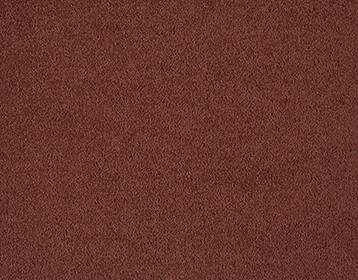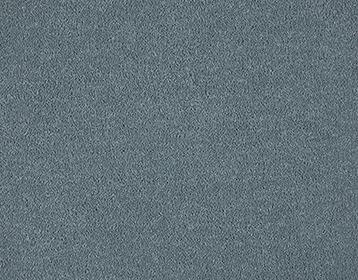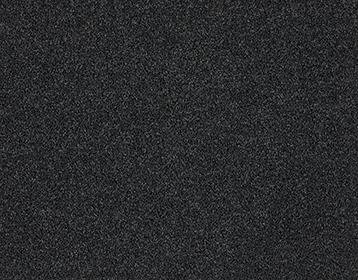Understanding the Basics of Laminate Flooring
Laminate flooring is a multi-layered synthetic flooring product that replicates the look of hardwood, stone, or tile. It consists of a top wear layer, a decorative layer, a core layer, and a backing layer. This construction makes laminate flooring resistant to scratches, stains, and fading. It also provides excellent durability, making it suitable for high-traffic areas of your home.
What is Laminate Flooring?
Laminate flooring is made from a composite material that is fused together using a lamination process. The top wear layer is a transparent layer that protects the decorative layer, which features a high-quality image of the desired flooring design. The core layer provides stability and strength, while the backing layer adds moisture resistance.
Benefits of Choosing Laminate Flooring
There are numerous benefits to choosing laminate flooring for your home. Firstly, it is cost-effective, making it an affordable option for budget-conscious homeowners. Secondly, it is easy to maintain and clean, requiring only regular sweeping or vacuuming and occasional damp mopping. Thirdly, laminate flooring is available in a wide range of styles and designs, allowing you to achieve the look you desire for your space. Lastly, its installation process is relatively simple and quick, making it a popular choice for DIY enthusiasts.
But let's delve deeper into the benefits of laminate flooring. One of the key advantages is its durability. Laminate flooring is designed to withstand the wear and tear of everyday life. Whether you have kids running around or pets with sharp claws, laminate flooring can handle it all. Its scratch-resistant surface ensures that your floors will maintain their pristine appearance for years to come.
Another noteworthy benefit is the versatility of laminate flooring. With advancements in technology, laminate flooring can now accurately mimic the look and texture of natural materials such as hardwood, stone, or tile. This means that you can achieve the aesthetic appeal of these expensive materials at a fraction of the cost. Plus, the wide range of styles and designs available allows you to find the perfect match for your home's interior decor.
The Complexities of Installing Laminate Over Tiles
While laminate flooring installation might seem like a straightforward task, installing it over existing tiles can present challenges. The presence of tiles adds an extra layer of preparation and consideration to ensure a successful installation.
Why is it a Challenging Task?
Installing laminate flooring over tiles involves careful planning and preparation. The tiles need to be completely flat, clean, and free of any loose or damaged pieces. Any irregularities in the tile surface can affect the stability and appearance of the laminate flooring. Additionally, the height of the new flooring needs to be taken into account to ensure it fits seamlessly with existing door frames and transitions.
Potential Problems and Risks
Failure to adequately prepare the tiles before installation can result in issues such as uneven flooring, creaking, or even damage to the laminate itself. Inexperienced DIYers may also find it challenging to properly align the laminate planks, leading to visible gaps or an uneven appearance. These potential problems can be costly and time-consuming to fix, making it essential to enlist the help of professionals.
One of the key considerations when installing laminate over tiles is the condition of the tile surface. Any imperfections, such as cracks or unevenness, can cause the laminate flooring to become unstable and prone to damage. Therefore, it is crucial to thoroughly inspect the tiles and address any issues before proceeding with the installation.
Another factor to take into account is the type of tiles present. Different types of tiles require different preparation methods. For example, if the existing tiles are ceramic or porcelain, they may need to be sanded or roughened to create a better bonding surface for the laminate. On the other hand, if the tiles are vinyl or linoleum, they may need to be completely removed before installing the laminate.
In addition to the surface preparation, the height of the new flooring is an important consideration. Laminate flooring is typically thicker than tiles, so it's essential to ensure that the transition between the two is smooth and seamless. This may involve adjusting the height of door frames, baseboards, or other existing structures to accommodate the new flooring.
Furthermore, proper alignment of the laminate planks is crucial for a visually appealing and professional-looking installation. Inexperienced DIYers may struggle with achieving the perfect alignment, resulting in visible gaps or an uneven appearance. This can significantly impact the overall aesthetic of the room and may require costly repairs or replacements.
Given the potential complexities and risks involved, it is highly recommended to seek the assistance of professionals when installing laminate over tiles. Their expertise and experience can ensure a smooth and successful installation, saving you time, money, and potential headaches in the long run.
The Role of Professionals in Flooring Installation
When it comes to installing laminate flooring over tiles, professionals, such as those at Carpetworld, have the expertise and experience to ensure a successful and hassle-free installation process.
Expertise and Experience of Carpetworld Professionals
Carpetworld professionals are well-trained in all aspects of flooring installation, including laminate flooring over tiles. They have the knowledge and skills to assess the condition of the tiles, prepare the surface properly, and execute the installation with precision and care. Their expertise ensures a seamless and long-lasting result.
Tools and Techniques Used by Professionals
Carpetworld professionals utilize advanced tools and techniques that are specifically designed for laminate flooring installation over tiles. They have access to the latest equipment that enables them to prepare the tiles effectively and lay the laminate planks with precision. These specialized tools and techniques contribute to a high-quality and professional finish.
Additionally, Carpetworld professionals understand the importance of proper subfloor preparation when installing laminate flooring over tiles. They meticulously inspect the subfloor to ensure it is level, clean, and free from any imperfections that could affect the installation process. By taking the time to properly prepare the subfloor, Carpetworld professionals create a solid foundation for the laminate flooring, minimizing the risk of future issues such as unevenness or squeaking.
Furthermore, Carpetworld professionals are well-versed in the various types of laminate flooring available in the market. They can provide valuable guidance and recommendations based on the specific needs and preferences of their clients. Whether it's choosing the right thickness, texture, or color, Carpetworld professionals have the knowledge to assist customers in making informed decisions that will result in a flooring installation that meets their aesthetic and functional requirements.
The Process of Laminate Flooring Installation Over Tiles
Initial Assessment and Preparation
Carpetworld professionals begin the process by conducting a thorough assessment of the existing tiles. They check for any damage, uneven surfaces, or other potential issues that could affect the installation. Once the assessment is complete, they proceed to prepare the tiles by leveling any uneven areas, removing any loose or damaged tiles, and ensuring a clean and debris-free surface.
The Actual Installation Process
With the tiles properly prepared, Carpetworld professionals proceed with the installation of the laminate flooring. They carefully align each plank, ensuring a tight fit and an even appearance. They also pay attention to detail when it comes to trimming the planks to fit around door frames and other obstacles. The professionals work efficiently and effectively to complete the installation with minimal disruption to your daily life.
Why Choose Carpetworld for Your Flooring Needs
When it comes to your flooring needs, Carpetworld stands out as a reliable and reputable choice. Their commitment to quality service and customer satisfaction sets them apart from the competition.
Quality of Service at Carpetworld
Carpetworld prides itself on providing top-tier service to its customers. Their professionals are dedicated to delivering exceptional craftsmanship and attention to detail in every flooring installation project they undertake. They prioritize customer satisfaction and strive to exceed expectations, ensuring you are delighted with the end result.
Customer Satisfaction and Aftercare Services
Carpetworld goes the extra mile to ensure customers are satisfied with their flooring installation. They offer comprehensive aftercare services, including maintenance tips and assistance with any concerns or issues that may arise after the project is completed. With Carpetworld, you can have peace of mind knowing your laminate flooring will be installed correctly and that support is available whenever you need it.
Considering the complexities of installing laminate flooring over tiles, it is clear why professionals at Carpetworld should be entrusted with this task. Their expertise, experience, and commitment to customer satisfaction make them the ideal choice for your flooring needs. By choosing professionals, you can rest assured that your laminate flooring will be installed properly, providing you with a beautiful and durable result that will enhance your home for years to come.





























